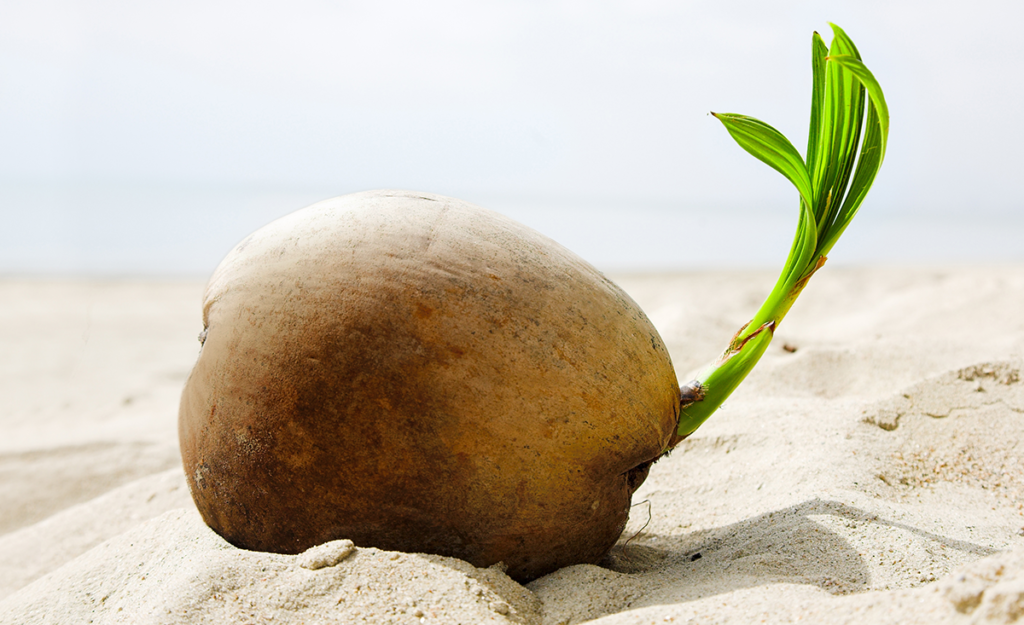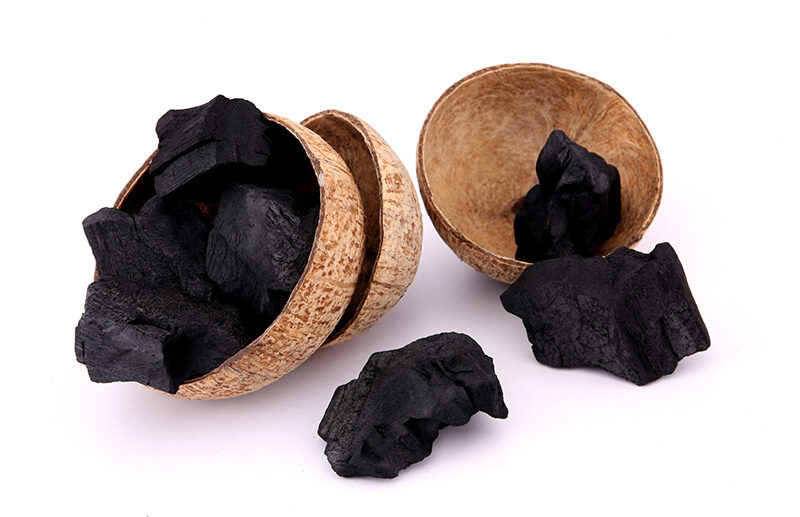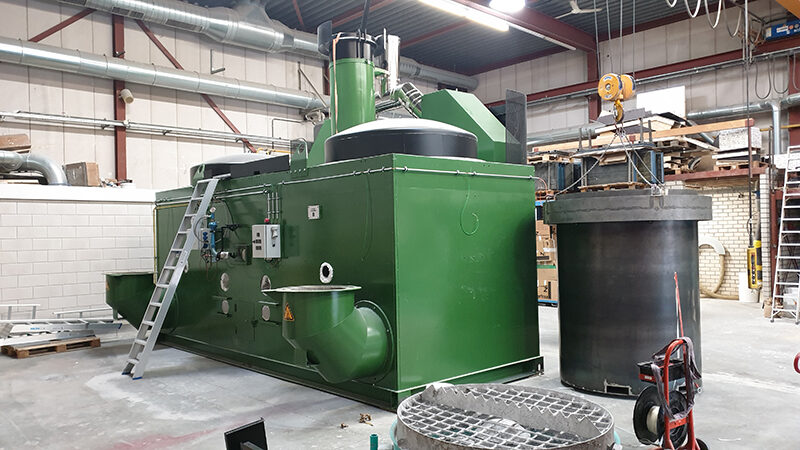
Coconuts have so many uses that the coconut tree is often nicknamed the tree of life. It takes just six months for a coconut to fully form and the trees can continue to produce coconuts for up to 100 years.
The versatile coconut
The Coconut A sustainable choice for the future
Jacobi Group uses an estimated 2.8 billion coconuts a year to produce our activated carbon products. We started using coconut shell as a raw material on a large scale around 2005, but it’s not a new idea. In fact, coconut based activated carbon was used in the First World War in gas masks and its use as a purifying substance goes even further back, with evidence of use by the Ancient Egyptians.

Activated carbon has a vast range of uses, including removing contaminants from water.
Activated carbon is a highly porous material, with millions of pores over its external surface. These pores extend deep into the interior of each particle, until reaching a size defined as micropores, where their diameter is smaller than 2 nanometers in size. These micropores are where adsorption (a process of binding impurities to a solid surface without changing their characteristics) occurs. Coconut shell is predominately microporous and therfore offers huge benefits for the adsorption of pollutants, allowing it to be used in a wide variety of gas and liquid purification processes.
Activated carbon products made from coconuts are used in both large-scale industrial operations, for example, gold mining, and consumer devices, such as batteries and computer hard drives. Other main markets include respiratory equipment, cabin air filters for cars and home air or water purifiers. Public concern for clean air and safe water in homes is on the increase and so these markets are continually growing.

The component Jacobi uses, the shell, is a byproduct of the food industry.
Much of the activated carbon produced today is made from non-renewable fossil fuel sources. For example, bituminous coal, lignite coal and peat. Often it is claimed that these raw materials lead to a better or more suitable product. However, they are clearly far less sustainable and have a long-term impact on the environment. Surely it is better to use a renewable product, even if that means marginally higher consumption rates? In the end the sensible choice has to be the sustainable choice.
Coconuts themselves are incredibly versatile, with each different component having a use. The palm trees on which they grow are often referred to as the ‘tree of life’ because of the sheer amount of products that can be made from them. The part we use at Jacobi is the shell, which is actually a surplus product of the harvesting process – one of the many reasons why coconut shell is our preferred raw material.
From Coconuts To Carbon
So how do we take a waste surplus and turn it into activated carbon that is used across the globe in so many applications?
The shell goes through quite a journey after harvesting. The first step is burning the shell to transform it into charcoal. As with all our processes, we are working towards making this as environmentally friendly as possible. Currently we have several initiatives in place and we are looking to implement them with as many suppliers as we can. This includes using specially designed GreenEco furnaces that ensure no heat energy is wasted and that any emitted gases are burned off and not released into the environment (read more about the CleanTech revolution on page 17).

Prior to activation, coconut shell is heated to very high temperatures.
Once it’s been burned, the charcoal has exactly the same form as it did previously – it’s just now black rather than brown. We then crush it to create the correct size for conversion into an activated carbon.
Activation is a further carefully controlled process under specific conditions that create the large internal surface area characteristic of an activated carbon. After activation, more crushing and sieving is needed to meet the required dimensions for its designated application. Additional steps may also be used to further treat the product, by washing, for example, or impregnation with chemicals to make it efficient in the client’s process. This isn’t needed for every application, and the activated carbon can be used without these additional steps.
This whole process is usually finished (meaning the product has been converted from coconut shell to activated carbon that’s ready for sale) within three months.
With concern for the planet increasing amongst individuals and corporations alike, one of the most important aspects for us when it comes to choosing a raw material is its sustainability. As a raw material, coconut shell’s green credentials are plentiful. Firstly, there’s zero waste. All parts of the coconut are used. The shells are used to create carbon, with the meat and coir used for health and beauty products, household items, and food and drink products. The coconut shell is also very hard and durable, both during manufacture and use, and this characteristic heavily reduces waste too.

We have worked with a partner to develop a furnace that will allow us to reuse energy and reduce emissions.
Secondly, using it to produce carbon has a negative CO2 impact. The production of 1 metric ton (MT) of standard coal based activated carbon releases about 6 MT of CO2 per MT of activated carbon produced. By producing carbon from the coconut shells, the CO2 that would have been released from the natural decay of the coconuts as a solid will be prevented from entering the atmosphere.
Finally, activated carbon made from coconut shell can be reactivated. This involves stripping out the adsorbed compounds, making the product suitable for use again, reducing both waste for the planet and cost for our customer. Plus, the carbon footprint of reactivation is estimated at 80% lower in comparison to producing virgin activated carbon.
At Jacobi we are fully invested in our commitments to looking after our planet and to providing the very best solutions to our customers’ problems. Using coconut shell as a raw material for our activated carbon products allows us to fulfil both of these commitments.
